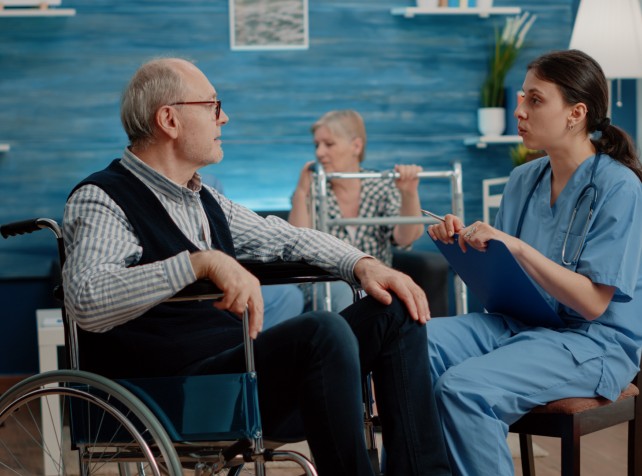On a Tuesday afternoon in Melbourne’s west, the dining hall of one aged care home fills with the scent of garlic, lemon and oregano. Volunteers from the local Greek community are serving spanakopita alongside residents’ usual meals, sparking conversations in both English and Greek. For many residents, it’s more than food — it’s a reminder of who they are and where they come from.
Across Australia, aged care services are discovering that dignity in later life often means holding on to culture. For some, that might be hearing their first language spoken by staff. For others, it’s the comfort of a traditional meal or the chance to celebrate cultural festivals. For Aboriginal and Torres Strait Islander peoples, it means care that is deeply connected to Country, kinship, and community.
Subscribe for FREE to the HealthTimes magazine
A system serving a diverse population
Australia’s aged care system must meet the needs of a population that is both ageing and highly diverse. Around
one in three older Australians were born overseas, and
more than 20 per cent speak a language other than English at home. Indigenous Australians, who experience poorer health outcomes and age-related conditions earlier, also represent a significant part of the aged care population.
These demographics mean that cultural safety is not optional. It is core business. The
Aged Care Quality Standards now include cultural safety as a requirement under
Standard 1: Consumer dignity and choice, which obliges providers to value identity, culture and diversity. Services that ignore these needs risk leaving residents isolated, anxious, or disengaged.
Indigenous-led approaches
In Alice Springs, the
Tangentyere Aged and Community Services program provides home support and respite care for Aboriginal Elders. Staff speak local languages, activities reflect cultural practices, and care is guided by Elders themselves. The goal is not just to meet medical needs but to keep older people connected to Country and community.
Programs like these are often delivered through
Aboriginal Community Controlled Health Organisations (ACCHOs), which design services around Indigenous models of care rather than importing mainstream structures. This community-led approach builds trust, especially for people who may be wary of institutional care because of past experiences of exclusion or discrimination.
What works for CALD communities
For culturally and linguistically diverse (CALD) Australians, small adjustments can have big impacts.
-
Language access: Some facilities employ bilingual staff or interpreters so residents can communicate in their first language. This is particularly important for people living with dementia, who may revert to their mother tongue.
-
Food and festivals: Many services incorporate traditional dishes into regular menus and celebrate cultural festivals, from Lunar New Year to Ramadan. One Sydney provider consults with residents and families monthly to design menus that reflect their community’s backgrounds.
-
Partnerships with community groups: Churches, mosques, temples and multicultural organisations are often invited into facilities to run activities, bringing familiar rituals and rhythms of life into aged care settings.
The
Federation of Ethnic Communities’ Councils of Australia (FECCA) has consistently advocated for these practices to be embedded across the sector. In consultations, FECCA found that many older migrants feared losing their culture if they entered aged care — a fear that can be addressed with inclusive, everyday practices
Challenges for providers
Delivering culturally safe care is not always straightforward.
-
Recruiting bilingual staff is difficult, especially outside metropolitan areas.
-
Many workers report they have not received adequate training in cultural safety.
-
Some providers struggle to balance family expectations with residents’ autonomy — a common issue in cultures where families expect to remain central to decision-making.
-
Smaller services may lack the funding to adapt menus, design programs, or build partnerships with community groups.
These challenges underline why cultural safety must be supported by system-level investment and training, not left to individual facilities to patch together.
Towards an inclusive aged care system
Despite the challenges, there are countless examples of good practice: multicultural facilities running weekly language and dance sessions, Indigenous services embedding care in community, and providers that treat food and festivals as central to wellbeing rather than “extras.”
The incoming
Aged Care Act embeds cultural safety as a guiding principle across the sector. For CALD and Indigenous Australians, this means providers will need to meet standards not only of clinical care, but also of cultural respect, language access, and identity support.
The real test will be in practice. Legislation can set expectations, but day-to-day care is delivered in kitchens, gardens, activity rooms and community visits. It is here — in the meals, the conversations, the rituals and the recognition of heritage — that cultural safety becomes real.
The future of aged care in Australia must be one where every resident feels at home, whether that means celebrating Ramadan, eating a traditional Greek meal, hearing a first language spoken, or sitting with Elders on Country. Cultural care is not symbolic; it is everyday care. It is about ensuring that older Australians can age with dignity, identity, and belonging.












